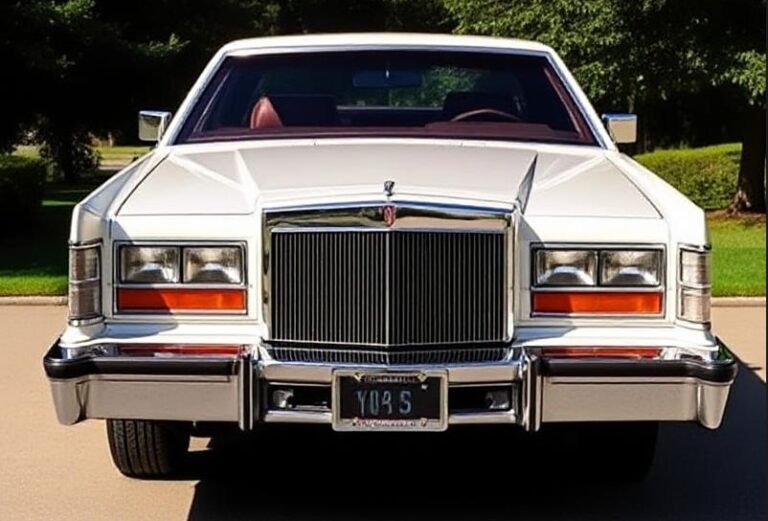The Evolution of the Mercury Tracer: A Comprehensive Overview
The Mercury Tracer, a compact car produced by the Mercury division of Ford Motor Company, holds a significant place in the history of American automobiles. Launched in the late 1980s, this vehicle underwent various iterations, embodying the changes in design, technology, and consumer preferences throughout its evolution. In this article, we will explore the Mercury Tracer’s production years, its various models and trim levels, and how it adapted to the evolving automotive landscape.
Introduction to the Mercury Tracer
Introduced in 1986, the Mercury Tracer was designed to be a compact car that appealed to a wide range of consumers. It filled a niche in the market, offering practicality, affordability, and decent fuel efficiency during a time when these attributes were highly sought after due to changing fuel prices and economic conditions.
Overview of Production Years
The Mercury Tracer was produced from 1986 to 1999, going through various updates and redesigns that reflected the changing demands of consumers. The vehicle was available in both hatchback and sedan variants, which contributed to its appeal in differing market segments.
- First Generation (1986–1989)
The first generation Tracer emerged as part of Ford’s plan to penetrate the compact car market by leveraging the economy and efficiency of the platform. The first-generation Tracer was fundamentally a rebadged version of the Ford Escort, sharing the same platform, mechanical components, and engineering. The hatchback variant was particularly popular due to its versatility.
- Models and Trim Levels: The Tracer was available in three primary trim levels:
- Tracer Base: The base model was aimed at budget-conscious consumers. It came with basic features necessary for daily driving.
- Tracer L: This trim added some enhancements such as upgraded upholstery and additional convenience features.
- Tracer GS: The GS trim offered more luxury appointments, including higher-grade interior materials and upgraded sound systems.
- Second Generation (1990–1993)
The second-generation Tracer was introduced with a larger body and updated styling. The new design embraced the popular aerodynamic trends of the early 1990s, resulting in a sleeker appearance and improved fuel efficiency.
- Models and Trim Levels: With this generation, the model range expanded significantly:
- Tracer Base: Continued as an entry-level model.
- Tracer L: Enhanced trim with additional comfort features.
- Tracer GS: Maintained its position as a mid-tier model, with optional sporty features.
- Tracer LS: A new addition that offered improved performance with a more powerful engine option and additional luxury features.
The Mid-1990s Redesign and Market Competition
- Third Generation (1994–1996)
The third generation marked a critical turning point for the Mercury Tracer. The years leading up to this iteration were characterized by increased competition in the compact segment, forcing automakers to innovate rapidly. The new design was focused on further improving reliability and enhancing interior quality.
- Models and Trim Levels: The car continued to expand its features:
- Tracer Base: Remained the no-frills option.
- Tracer L: Continued to offer better comfort with additional features.
- Tracer LS: Gained popularity as a sportier option, focusing on youthful appeal.
- Tracer wagon: This new body style made its appearance, appealing to families looking for utility and cargo space.
- Fourth Generation (1997–1999)
The final generation of the Mercury Tracer came in a time of significant shifts in consumer behavior, with SUVs becoming more popular than compact cars. In response, Ford reduced the number of trim levels and streamlined production.
- Models and Trim Levels: With a focus on affordability, the Tracer line-up reflected the brand’s transition strategy:
- Tracer: Offered as a more unified model approach, it carried the features and branding of a compact car with enhancing safety and comfort options.
- Tracer LS: Offered slightly upgraded amenities and was seen as the better-equipped choice, catering to those desiring a more elegant interior experience.
.
THIS is GOOD stuff if your car is in need:

.
The End of an Era
The Mercury Tracer saw its final year of production in 1999, coinciding with the restructuring of the Mercury brand. Ford decided to phase out the Mercury division entirely by 2010, leading to the discontinuation of the Tracer and other models under the Mercury name.
Legacy of the Mercury Tracer
Throughout its production run, the Mercury Tracer indicated the changing priorities of car buyers—from practical and economical performances during its original years to a more feature-rich, comfort-oriented approach during the final years. The Tracer catered to a diverse consumer base, showcasing innovations in safety, efficiency, and performance.
The adaptability of the Mercury Tracer, with various trim levels and configurations, allowed it to remain relevant despite growing competition and shifts in market demand, including the increasing popularity of SUVs and crossovers, which began to dominate the American automotive landscape in the late 1990s.
Conclusion
The Mercury Tracer’s journey is reflective of not only the evolution of the Mercury brand but also the broader automotive market. The vehicle’s various iterations and adaptations throughout its production years demonstrate how manufacturers must continuously innovate and respond to changing consumer preferences.
While the Tracer has long been discontinued, its legacy continues to provide lessons for automotive design, marketing, and brand evolution. The history of vehicles like the Mercury Tracer remains essential for understanding market dynamics and the lifecycle of automobile brands. Each model may have vanished from the roads, but the imprint they left on the automotive landscape endures.







